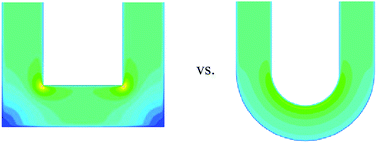Effect of channel geometry on cell adhesion in microfluidic devices†
Abstract
Microfluidic channels coated with

* Corresponding authors
a
Department of Chemical Engineering, Northeastern University, 360 Huntington Ave. 342 SN, Boston, Massachusetts, USA
E-mail:
smurthy@coe.neu.edu
Fax: +1 (617) 373-2209
Tel: +1 (617) 373-4017
b Department of Mechanical and Industrial Engineering, Northeastern University, Boston, Massachusetts, USA
Microfluidic channels coated with

 Please wait while we load your content...
Something went wrong. Try again?
Please wait while we load your content...
Something went wrong. Try again?
J. V. Green, T. Kniazeva, M. Abedi, D. S. Sokhey, M. E. Taslim and S. K. Murthy, Lab Chip, 2009, 9, 677 DOI: 10.1039/B813516A
To request permission to reproduce material from this article, please go to the Copyright Clearance Center request page.
If you are an author contributing to an RSC publication, you do not need to request permission provided correct acknowledgement is given.
If you are the author of this article, you do not need to request permission to reproduce figures and diagrams provided correct acknowledgement is given. If you want to reproduce the whole article in a third-party publication (excluding your thesis/dissertation for which permission is not required) please go to the Copyright Clearance Center request page.
Read more about how to correctly acknowledge RSC content.
 Fetching data from CrossRef.
Fetching data from CrossRef.
This may take some time to load.
Loading related content
